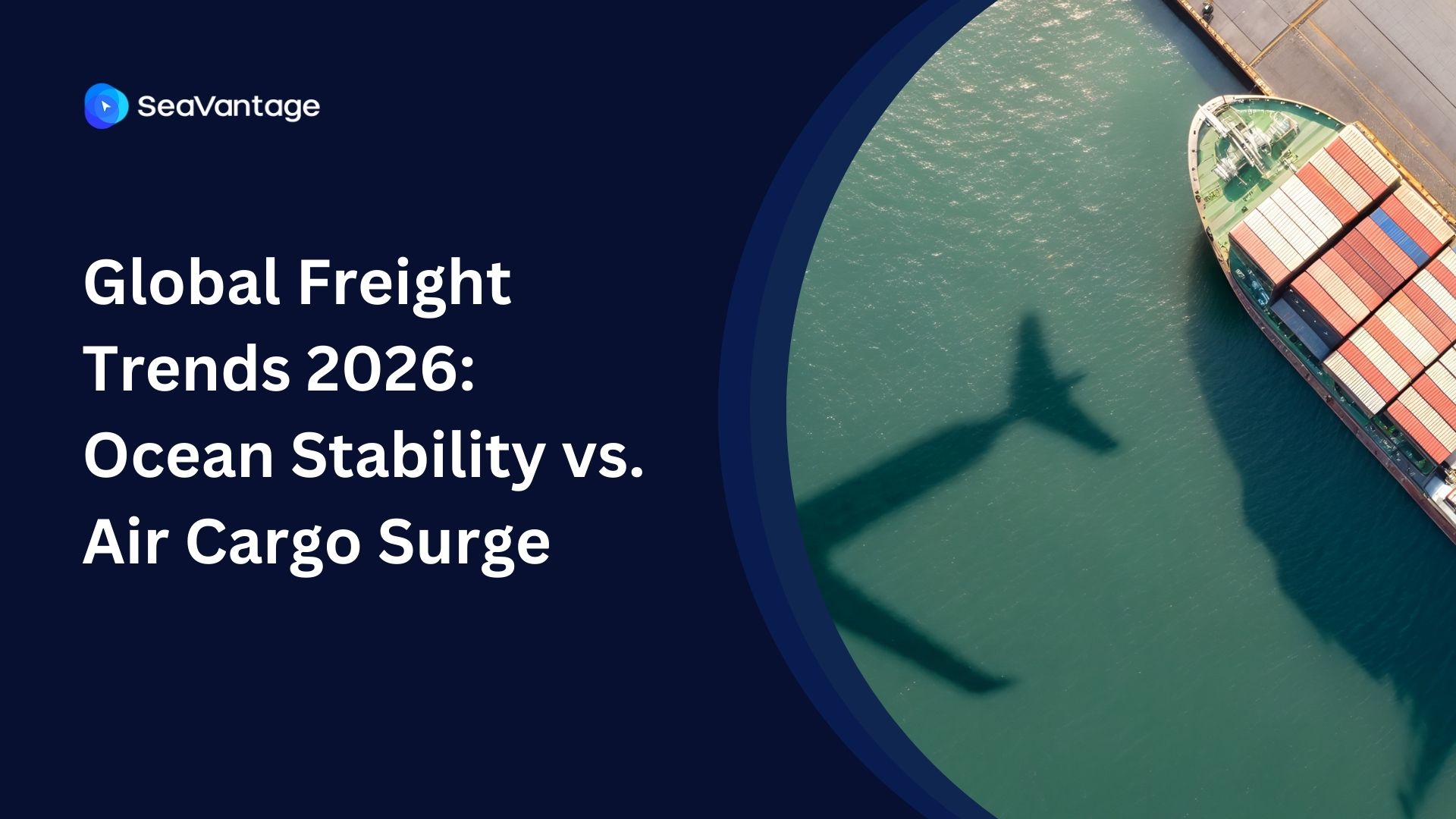What is a Port Call in Ocean Shipping? A Complete Guide
.jpg)
In the world of ocean shipping, port calls play a crucial role in the movement of goods across global supply chains. Every vessel that sails the seas must make scheduled stops at ports to load and unload cargo, refuel, undergo maintenance, and facilitate crew changes. These stops are not just routine; they require precise coordination and efficient management to avoid costly delays.
In this guide, we’ll explore what a port call is, its key activities, the process involved, challenges faced, and strategies for optimization. By the end, you'll have a comprehensive understanding of how port calls influence global trade and the future of port operations.
Defining a Port Call
A port call refers to the scheduled stop of a vessel at a port for operational purposes. These operations include cargo handling, bunkering (refueling), and compliance checks.
It is important to distinguish between a port call and a port of call:
- A port call is a vessel’s stop at a specific port for operations.
- A port of call refers to any port listed in a ship's itinerary, whether it stops for operational reasons or simply passes by.
For example, a container ship sailing from Shanghai to Rotterdam may have multiple ports of call along the route, but it will only make a port call where necessary operations are required.
Key Activities During a Port Call
Each port call involves several essential activities to ensure the smooth operation of the vessel and the supply chain. These include:
- Loading and Unloading Cargo – Containers, bulk goods, or liquid cargo are transferred between the ship and the terminal.
- Bunkering (Refueling) – The vessel takes on fuel to continue its journey.
- Crew Changes – Seafarers embark or disembark as part of scheduled rotations.
- Maintenance and Repairs – Routine inspections or urgent repairs may be conducted.
- Regulatory Inspections – Customs, immigration, and environmental authorities ensure compliance with legal and safety regulations.
Each of these operations must be executed efficiently to minimize delays and additional costs.
The Port Call Process
Pre-Arrival Planning
Before a vessel reaches port, detailed planning takes place, including:
- Voyage Planning & Route Optimization – Ensuring the fastest, most efficient route.
- Berth Scheduling – Coordinating with port authorities to secure docking space.
- Document Preparation – Submitting customs, cargo, and crew documentation to avoid clearance delays.
Arrival and Berthing
Once the ship nears the port, local navigational support is required:
- Harbor Pilots – Experts board the ship to guide it safely into the port.
- Tugboats – Assist in maneuvering the vessel to its berth.
- Mooring Operations – The vessel is secured with ropes to keep it stationary at the dock.
Cargo & Other Operations
At the berth, multiple activities take place simultaneously to maximize efficiency:
- Cargo Handling – Cranes and other equipment move containers and bulk goods.
- Bunkering & Provisions – Fuel, food, and other supplies are loaded onto the vessel.
- Waste Disposal & Water Supply – Ensuring environmental compliance and resupplying clean water.
Departure Procedures
Before a vessel leaves port, final steps must be completed:
- Finalizing Customs & Clearance Documentation – Ensuring compliance with international shipping regulations.
- Unmooring & Departure – The ship is released and guided back into open waters.
This structured process ensures the vessel remains on schedule and avoids unnecessary costs.
Challenges in Port Calls
Despite careful planning, several challenges can disrupt port calls, including:
Port Congestion – A high volume of vessels may cause delays in berthing.
Weather Delays – Storms, strong winds, and rough seas can impact arrival and departure.
Regulatory Compliance – Each port has different customs and legal requirements, leading to potential delays.
Stakeholder Coordination – Communication among shipping companies, port authorities, and service providers must be seamless to avoid inefficiencies.
These challenges highlight the need for improved operational strategies and technological advancements in port call management.
Strategies for Optimizing Port Calls
To enhance efficiency and reduce delays, shipping companies and port authorities employ various strategies, including:
Advanced Scheduling & Digital Communication – Real-time digital platforms help coordinate port operations.
Automated Cargo Handling – Robotics and AI optimize loading and unloading times.
Real-Time Monitoring Systems – Sensors and tracking tools provide updates on vessel and cargo status.
Collaboration Between Shipping Companies & Ports – Better coordination ensures smooth transitions and reduces idle time.
Implementing these strategies can significantly improve turnaround times and reduce operational costs.
The Future of Port Calls
As the maritime industry embraces technology and sustainability, we can expect several innovations:
Automation & AI Integration – Ports are increasingly using AI to predict vessel arrivals, optimize berth scheduling, and streamline cargo handling.
Green Port Initiatives – Ports are investing in shore power and alternative fuels to reduce emissions.
Blockchain & Digital Documentation – Enhancing security and transparency in port call operations.
The evolution of port calls will play a critical role in shaping the future of global trade by making supply chains more efficient, cost-effective, and environmentally friendly.
Conclusion
Port calls are a fundamental part of ocean shipping, influencing global trade efficiency and supply chain management. While challenges such as congestion and regulatory hurdles exist, technological advancements and strategic planning are making port calls more efficient than ever.
By optimizing operations and embracing digital solutions, shipping companies and port authorities can enhance efficiency, reduce costs, and contribute to a more sustainable maritime industry.
2025년 9월, 주요 글로벌 항만에서 어떤 운송사가 가장 긴 선박 체류 시간을 기록했는지 확인해보세요. 트렌드를 비교하고, 지연을 파악하며, 전체 항만 데이터를 통해 운송 전략을 최적화할 수 있습니다.
2025년 8월, 주요 글로벌 항만에서 어떤 운송사가 가장 긴 선박 체류 시간을 기록했는지 확인해보세요. 트렌드를 비교하고, 지연을 파악하며, 전체 항만 데이터를 통해 운송 전략을 최적화할 수 있습니다.
2025년 7월, 주요 글로벌 항만에서 어떤 운송사가 가장 긴 선박 체류 시간을 기록했는지 확인해보세요. 트렌드를 비교하고, 지연을 파악하며, 전체 항만 데이터를 통해 운송 전략을 최적화할 수 있습니다.
iscover the 4 critical ocean freight trends for 2026, from the Red Sea reopening and fleet overcapacity to shifting global trade maps. Prepare your supply chain now.
Discover key 2026 freight market trends: Port of Houston expansion, air cargo "super peak," and ocean freight stability. Plan your supply chain with SeaVantage.
Explore November 2025 global port dwell time data. See which ports and carriers led in efficiency across Antwerp, Busan, Long Beach, Rotterdam, and Singapore.



.svg)





.jpg)

.png)